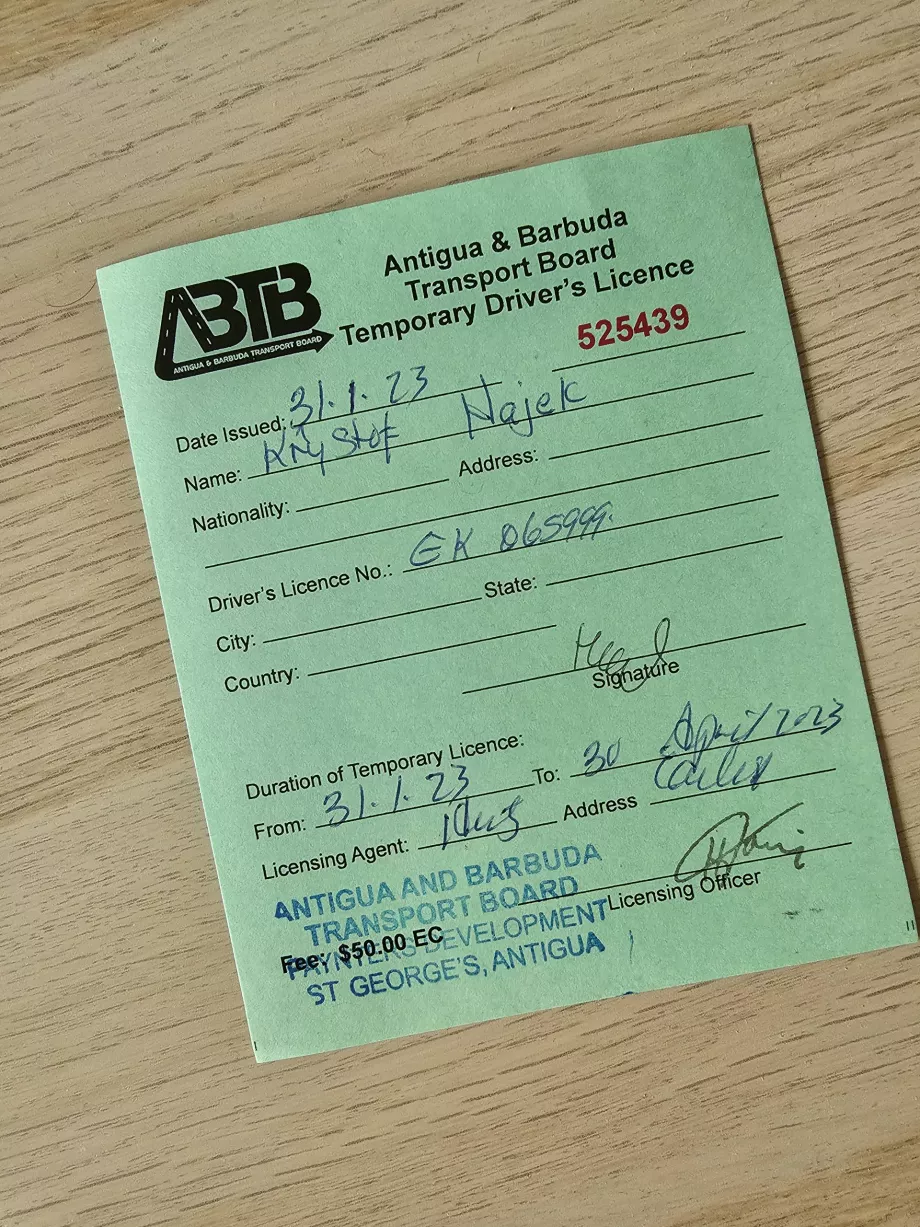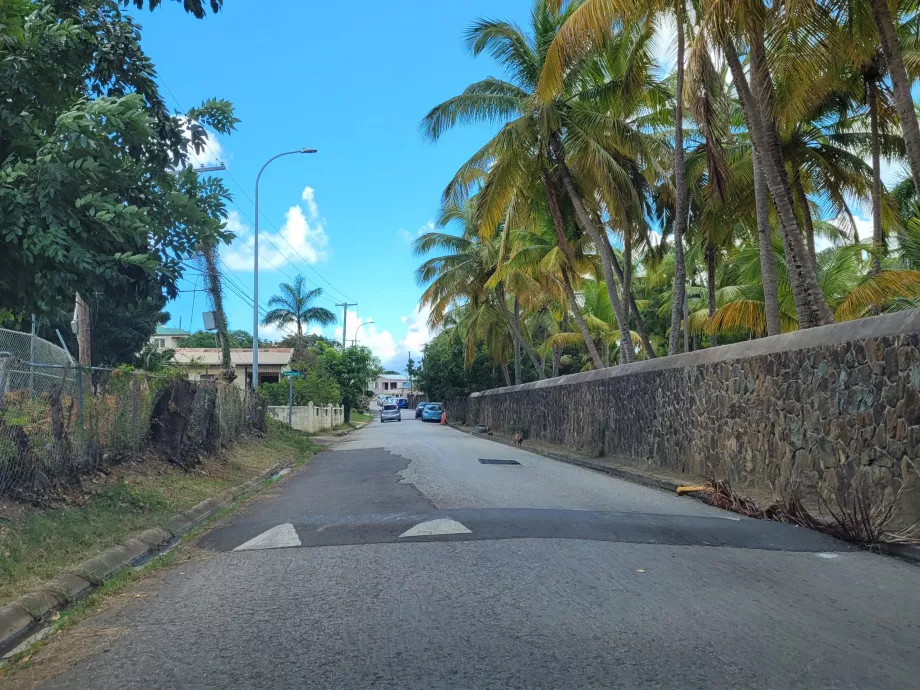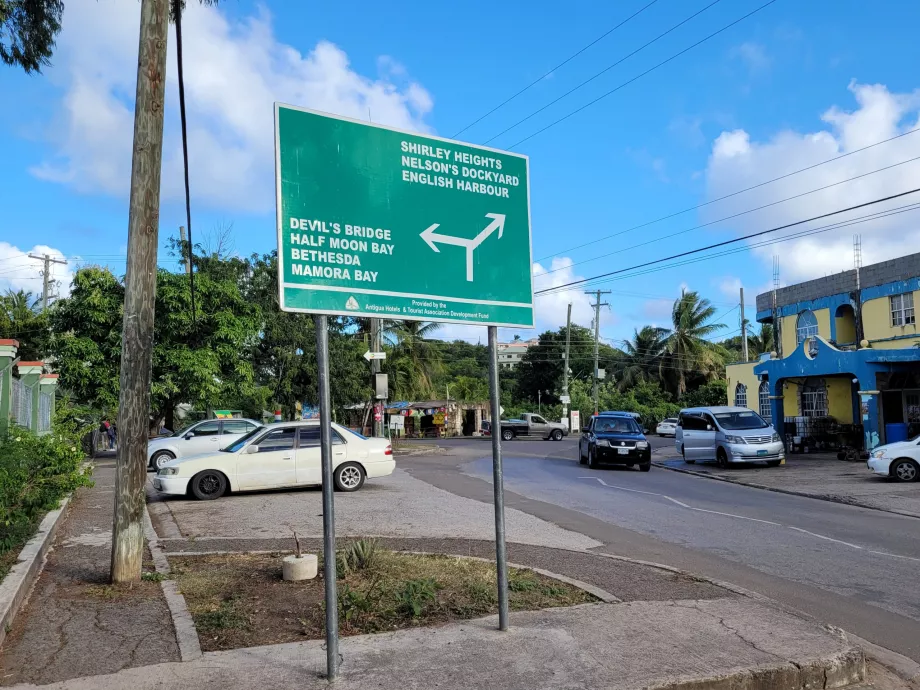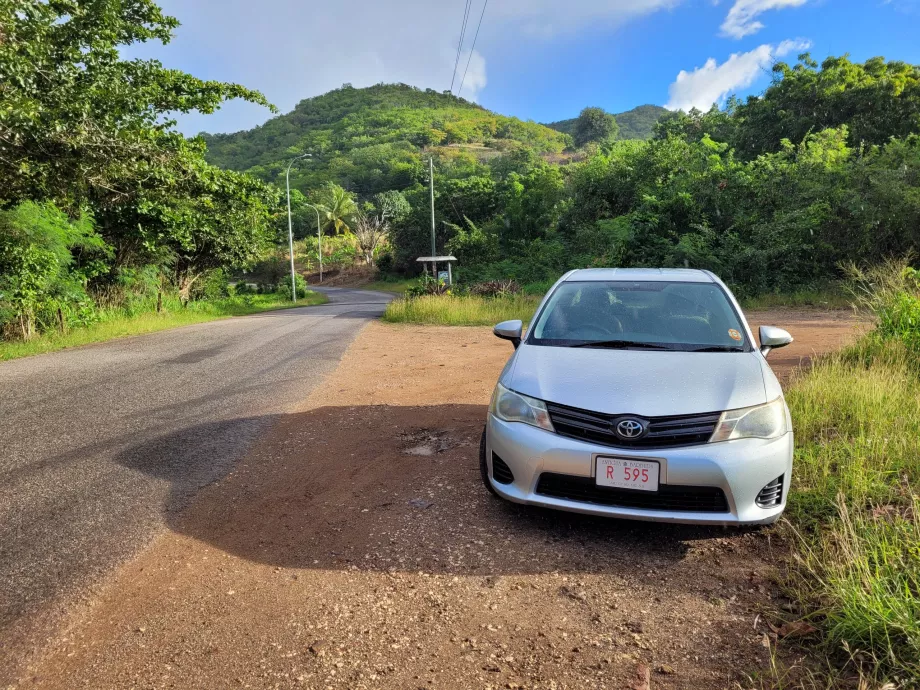Car rental in Antigua and Barbuda
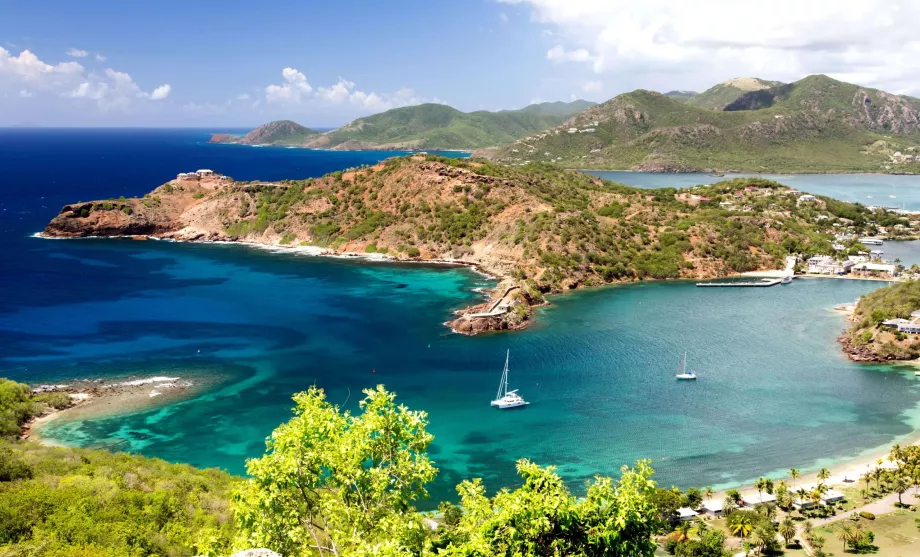
All the beautiful beaches and the photogenic hilly hinterland can only be enjoyed in Antigua with a rental car. Public transport here is more for locals, and it's "all lines go to St. John's". Taxis end up costing more than renting a car.
Antigua and Barbuda has left-hand traffic.
How and when to book a car in Antigua
There are many large multinational car rental companies operating in Antigua, as well as smaller local pan-Caribbean ones. Car rental here is conducted like in any other civilized country.
Nevertheless, it has the specificity of a shortage of cars. Book a car at least 2-3 months in advance, especially in the December-April period. Otherwise, you run the risk that realistically none of the car rental companies will have spare capacity and you will end up completely without a car, resulting in a complete overhaul of the program.
Compare prices and book a car - Antigua
We've had good experiences with Hertz, Drive-A-Matic and Avis.
Antigua car rental prices
Surprisingly, Antigua is not one of the expensive destinations when it comes to renting a car. While prices vary in peak and low season, they are still within fairly reasonable guidelines.
- Weekly rental peak season (December to March): from USD 310 for the smallest car
- Weekly rental low season (April to June): from USD 265 for the smallest car
- Weekly rental off-season (July to November): from USD 220 for the smallest car
- Current rental prices in Antigua
Prices for larger SUVs are up to 3 times that of the smallest cars.
As elsewhere in the world, the longer you rent a car in Antigua, the lower the price per day you'll get.
International and local driver's license for 20 usd
To hire a car in Antigua and Barbuda you will need a national driving licence and if you are from a non-English speaking country, then an international driving licence which you must carry with you at all times.
In addition, you will need to pay a fee 20 usd / 50 xcd for a temporary local driving licence, which will be issued to you directly by the car rental company on site in the form of a handwritten green paper.
No photograph is required for the local driving licence.
Petrol prices and petrol stations
Petrol is quite expensive in Antigua and Barbuda, although it is still one of the cheaper of the Caribbean nations.
American units of measure are used here, so all prices are per gallon, not per litre. 1 gallon = 3.78 litres.
At present (2024), 1 gallon of regular gasoline (the term "Gasoline" is used here) costs about 13 xcd.
How do petrol stations work in Antigua and Barbuda?
There is a good density of petrol stations on Antigua and you can find a petrol station in every major town. Barbuda has a single petrol station south of the centre of Codrington.
All petrol stations here are manned, and there are no self-service stations yet.
Just pull up to the stand, open the tank and tell the attendant how much you want to fill up. Either in litres or in maximum monetary value, or just say "full tank please". Payment can always be made in US and Eastern Caribbean dollars and in the vast majority of cases by card. You pay directly to the attendant who filled your tank, so you don't have to leave the car at all.
Most petrol stations are equipped like everywhere else: a small convenience store with snacks and car accessories.
Quality and road markings
The island of Antigua has a very dense network of roads and asphalt streets, so you can get absolutely everywhere in a small car. There are no motorways and no tolls on any stretch of road.
A significant limiting factor is the quality of the roads, which is absolutely miserable.
Horizontal markings are virtually non-existent, as are verges, which are crumbling or completely missing. Unexpected and often very deep potholes await you at every corner, whether you are driving along the main road or the most backward alley. After all... it's virtually impossible to tell the main from the side at first glance. The quality and width of the roads are similar everywhere.
Also very common are cross slowdown thresholds, which were probably once marked with white horizontal arrows, but nowadays are rather invisible. These speed bumps are scattered all over the island and outside the major towns.
The key to success is driving slowly and anticipating potholes absolutely everywhere.
The signs are European style, but the markings are rather haphazard and usually driven by habit or road conditions. The directional signage is also very poor, as it is not at all junctions and when it is, the arrows on the sign often do not match the shape of the junction at all.
Traffic and traffic regulations
In Antigua and Barbuda, traffic is on the left.
On the other hand, the advantage of driving in Antigua is the considerate nature of the local drivers and the fact that they can recognize a foreigner in a car at a glance. In fact, all rental cars have different license plates: a red R with numbers on a white background.
The local drivers do drive a little wildly, but just enough to avoid wrecking the car on the tragic roads. So you don't have to worry about fast dangerous driving, or nervous overtaking if you drive more carefully than the locals.
Compare prices and book a car - Antigua
Drivers will usually honk at you when overtaking, but that's normal here: they're just letting you know they've decided to overtake and the courtesy is to slow down or pull more to the side of the road.
You don't have to worry about speeds. The condition of the roads, their winding nature and dense development make it virtually impossible to exceed the posted limits (40 mph outside the village, or 20 mph in the village). Don't be surprised to find that many rental cars have speedometers in kilometers per hour, while signs indicate speed in miles per hour. As we write, it doesn't matter. You can't go fast here because it's just not possible.
The only things the police check and consistently fine are seat belt use and violations of the blood alcohol limit, which is set at a maximum of 0.08%.
Parking
Parking in Antigua and Barbuda is a joy and a pain at the same time. Large spacious car parks are the exception and can only really be found in English Harbour and at some beaches such as Jolly Beach and Ffryes Beach.
At other beaches, you park where there's a bit of space, or along the roadside. In towns there is extremely little space to park, but on the other hand it doesn't excite anyone if you just leave your car on the edge of the street.
With the exception of some garages and car parks in the capital city of St. John's, parking is free everywhere.
Any questions left?
If you have any questions or comments about the article...

